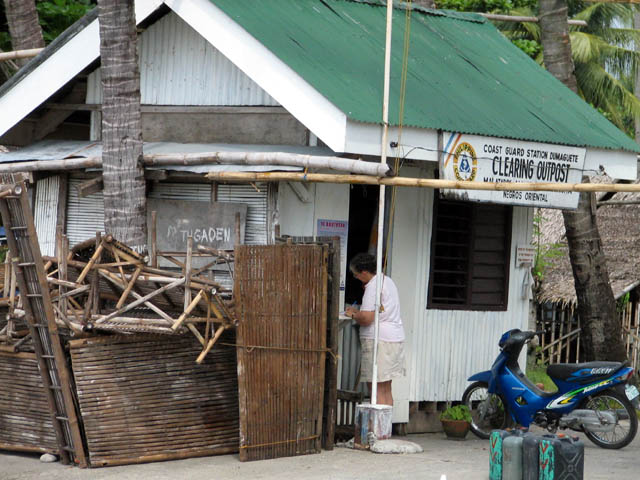

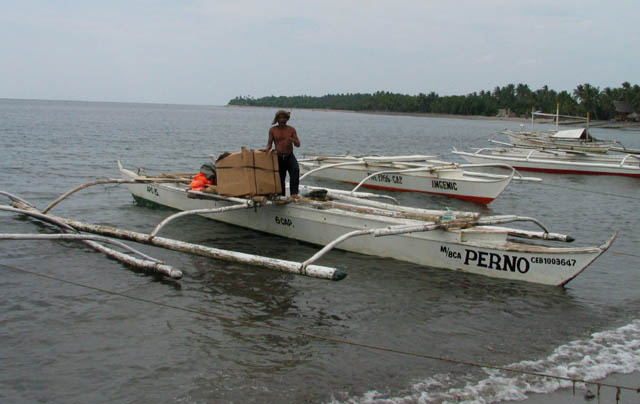
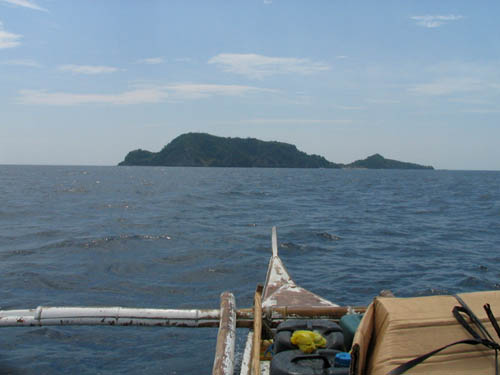
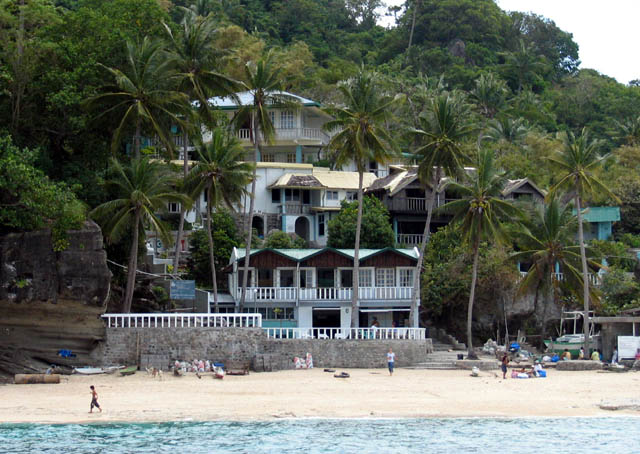
This October, we continued the tradition of the Canadian Embassy Thanksgiving weekend holiday on Apo Island. We managed to convince new arrivals Raymond and Darie to join us. Two other couples, Ginette and Serge and Georges and Celine were staying at a different resort on the mainland, but they came over to Apo for lunch and an afternoon of diving and snorkelling.
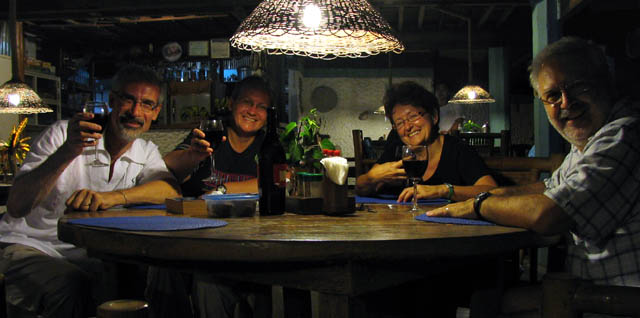
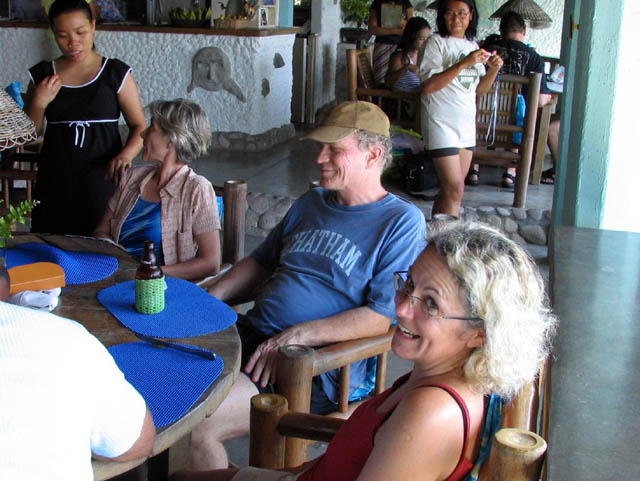
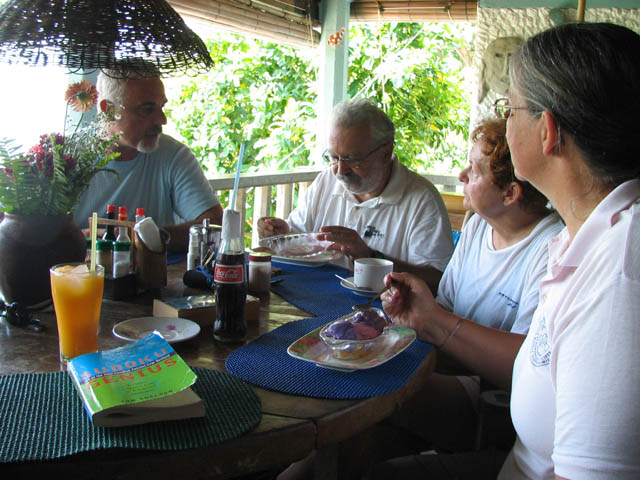
The diving was fantastic at Apo. Since we are more skilled than when we were taking lessons there last year, we actually had time to look around us and notice the fish and corals better. (I still haven't tried much underwater photography, and I find there are so many good photographers, it might be a bit pointless to compete. As I was making this web page, I discovered a site by Tommy Schultz. He has dived at Apo Island many times and has photographed most of the things we saw and many more besides. To get a feel for diving at Apo, I strongly recommend Tommy's photo gallery: http://tommyschultz.com/underwater_photos.html)
Of course we can now compare it better to the other sites in the Philippines that we've dived, and indeed it comes out on top. It is absolutely surrounded by coral in great condition, which is unheard-of, sadly, elsewhere. Also almost garbage-free. Because of the currents that sweep around it (yes, we were careful, and carefully-guided!), it also attracts some of the interesting big silvery fish like jacks and trevallys. Because of the marine sanctuary where no fishing is allowed, it also has an amazing variety of fish large and small. I can't begin to list everything we saw, though we were frantically looking things up every night to note them accurately in our logbooks, but you may be particularly impressed, as we were, by the many green sea turtles (minimum two per dive), a cuttlefish that changed colours and squirted ink at us, huge schools of midnight-blue triggerfish (confusingly called "red-toothed triggerfish", go figure why they focused on that feature when naming them) and pyramid butterfly fish (look them up if you can - a gorgeous black-white-orange/yellow combination), and most stunning of all, a bump-headed parrotfish well over a metre long. YIKES was my first thought on seeing it. But it wasn't feeling any more aggressive than we were, so we just hung there and looked at each other.
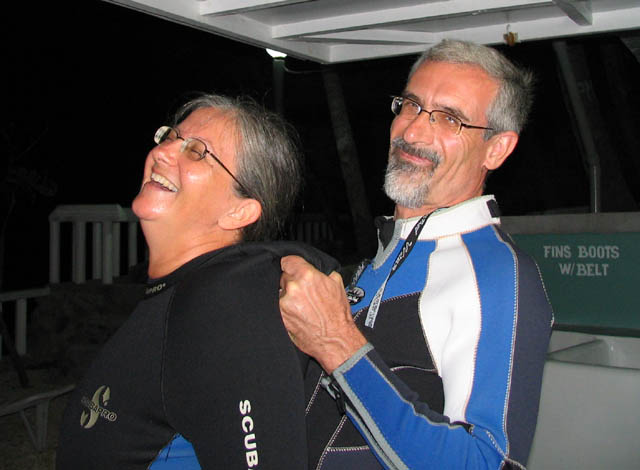
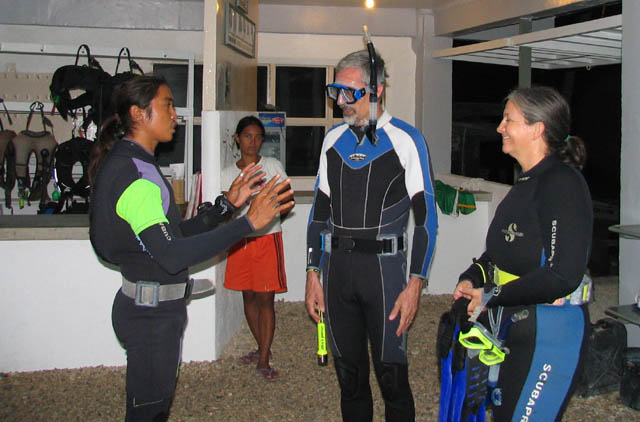
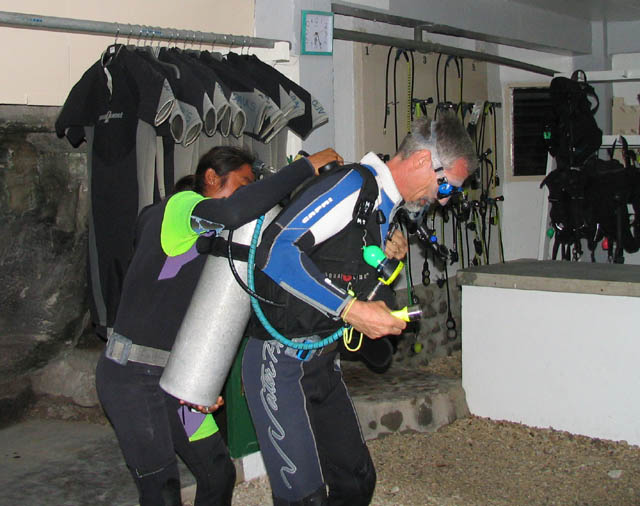
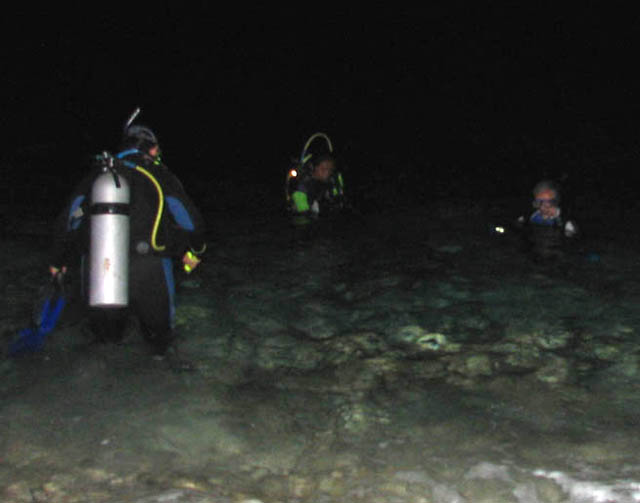
On our one night dive we saw a sleeping turtle as well as all sorts of shells with their inhabitants peeking out. Some were the original inhabitants - very large snail-like mollusks - but others were hermit crab interlopers. We disturbed a pair of these who were fighting. We also saw a stingray and a very tiny cuttlefish or baby squid. The divemaster, Yhan, had warned us that if we saw a sea pen, we should settle gently on the bottom nearby and turn out our lights. When we did this, he moved his fin near it to create a disturbance in the water. The "feathers" of the sea pen immediately folded up to the shaft of the pen and released a swirl of bioluminescence.
While diving at Cogon point, we saw a very large school of jacks at the end of the dive. Yhan kindly let me use his alternate regulator and share his air tank as mine was almost empty. Later, I saw a smaller school of jacks but much closer while snorkelling in the marine santuary.
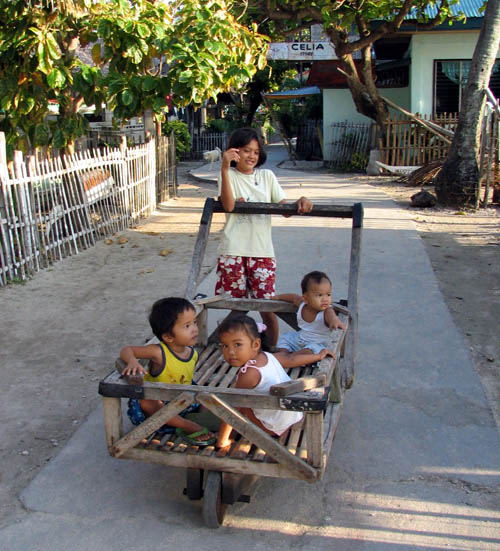
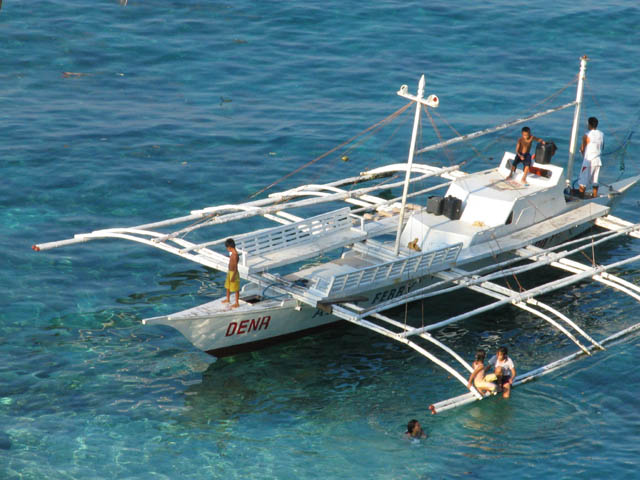
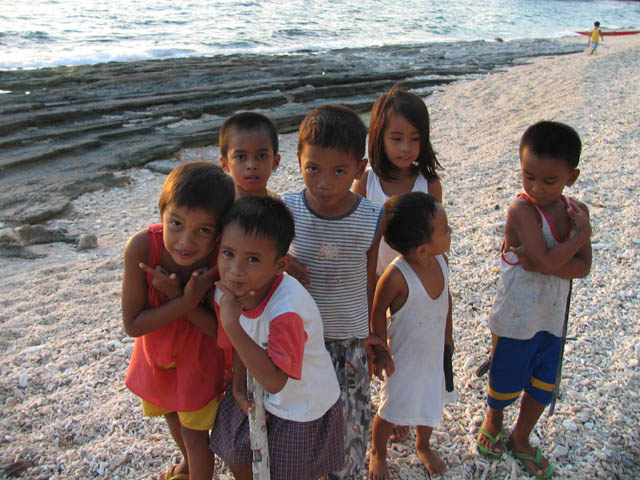
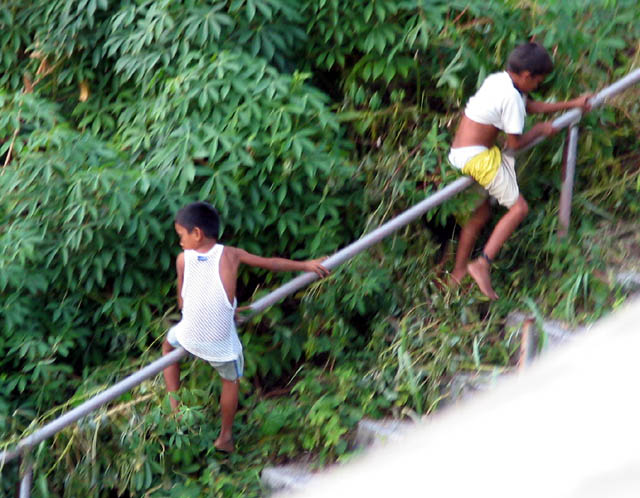
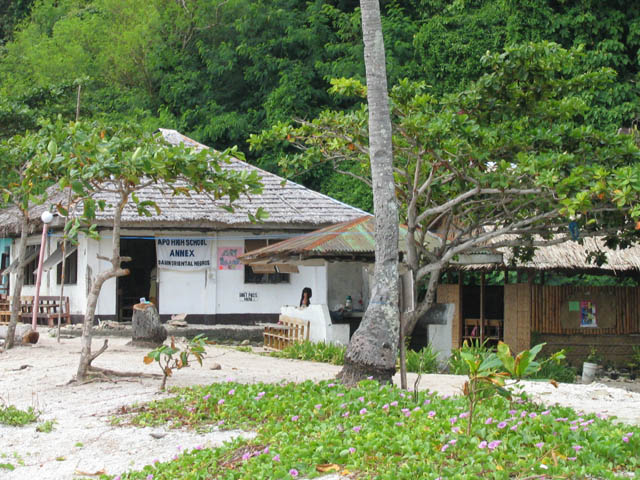
The kids on Apo Island were as cute as ever, running around the village, playing on the beach, swimming and diving off the boats. The high school had added another room since last year, so there are now two years of high school on the island. A site has been selected for a more permanent school building and they hope to begin constructing it soon. We brought a couple of reference books from Manila to donate to their library.
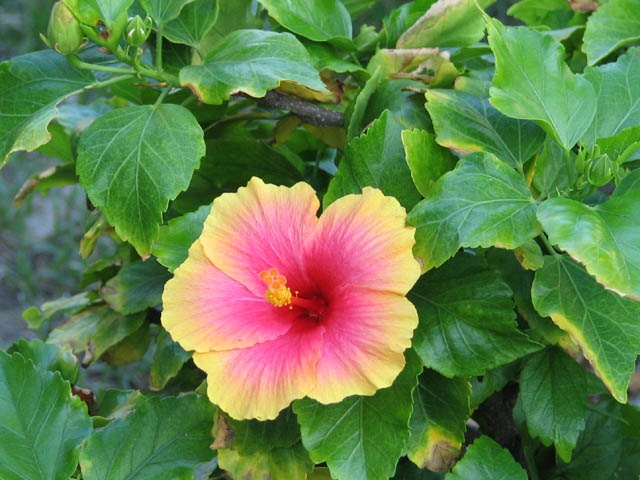
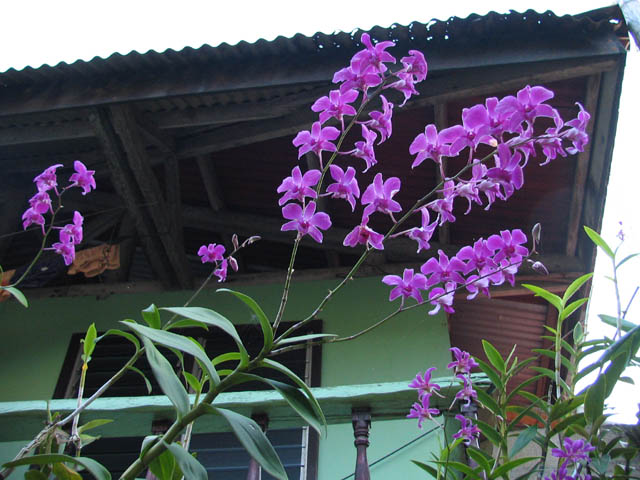
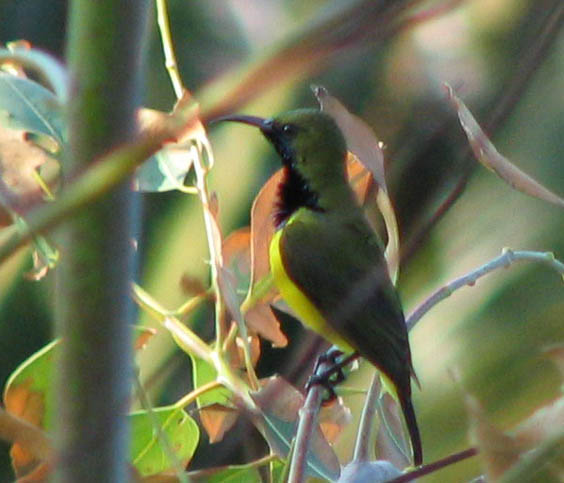
Of course, one of the main attractions from our point of view is to get away from the air pollution of Manila, to breathe fresh air and appreciate some natural wildlife as well as the well-tended gardens.
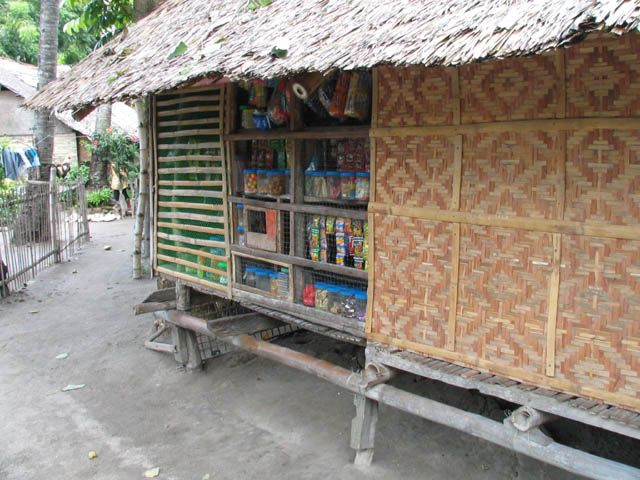
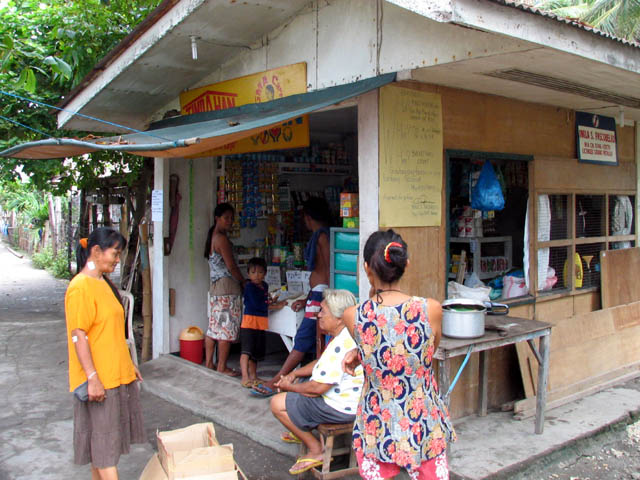
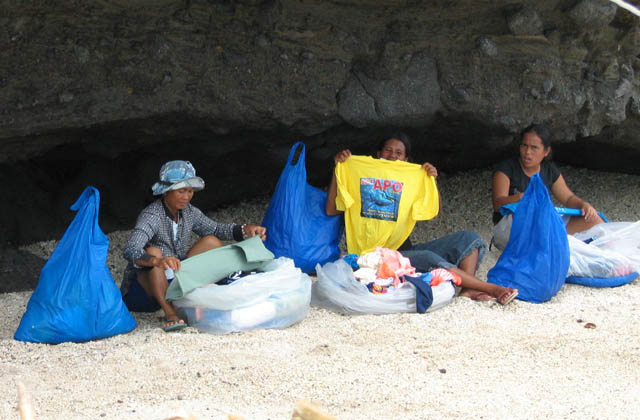
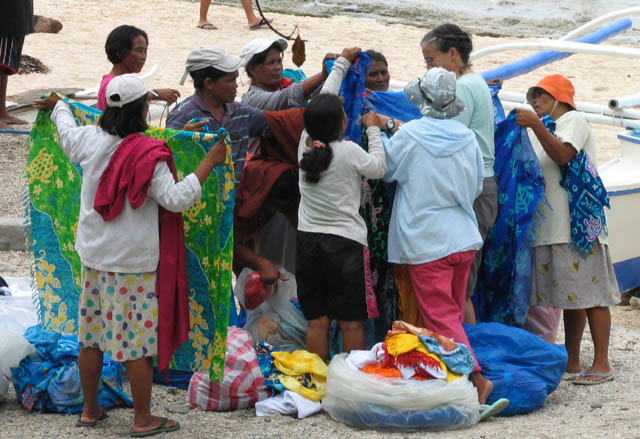
It is interesting to see the island economy at work. It's like a microcosm of the Philippines. The usual village store is like the first picture above - everything is enclosed, everything is in small packages and transactions are made one-by-one through a tiny opening in the wall (the black rectangle beside the orange painted bar). Very recently, one new-style store has opened. Customers can actually walk in and touch the merchandise! (Second picture.) However when trying to sell souvenirs to tourists, the common practice is still to wait on the beach for boats to arrive, and then crowd around the customers, desperately trying to get them to choose this sarong over that sarong.
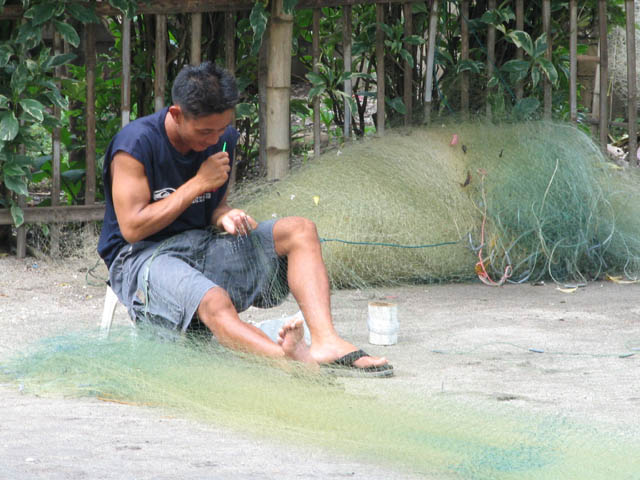
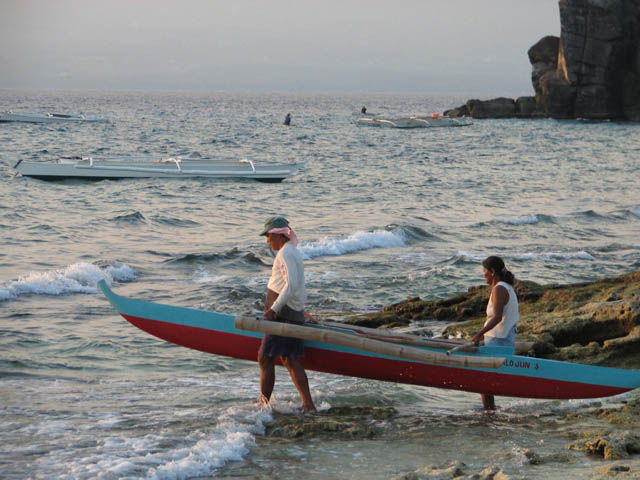
Fishing is still one of the main activities of the local people. Fortunately, they have realized "If they live, we live," so the people strongly support the marine sanctuary because they have seen the pay-off of providing a safe place for the fish to breed and mature. And as a side effect, they get revenue from the numerous divers who make regular pilgrimages to see these fish in their protected environment.
Now if they could only package and export the sunsets...
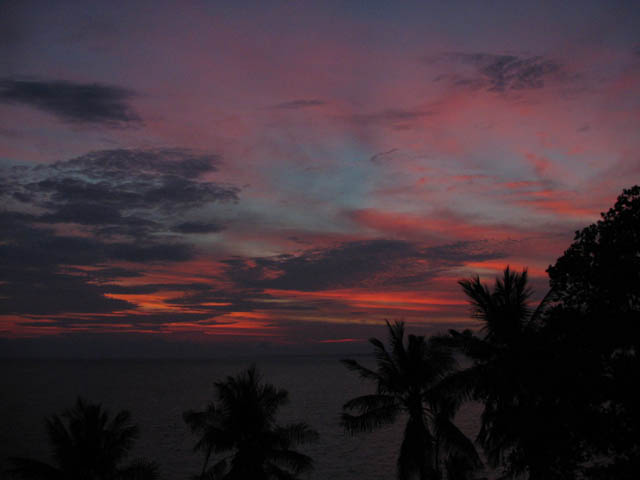
We had a bit of extra time in Dumaguete before our flight left, so I finally got a chance to take a picture of this delightful monument in the waterfront park. It commemorates the arrival of the Sisters of St. Paul of Chartres and their establishment of St. Paul Academy. The driver and van from Liberty's Lodge on Apo Island had to make another pickup, so we were on our own to find transportation to the airport. Hence, our first ride in a motorcycle "tricycle".
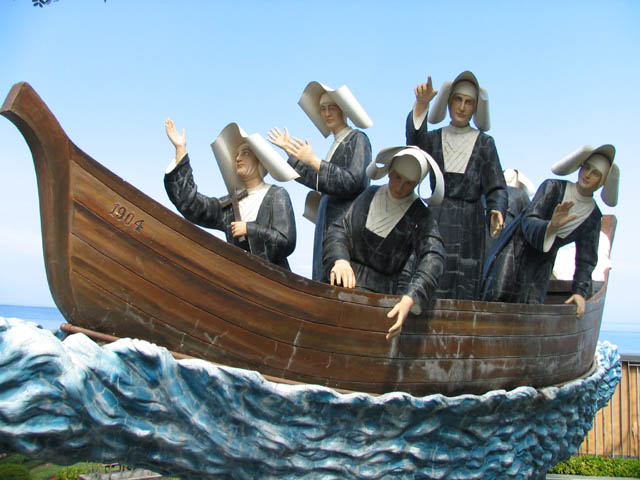
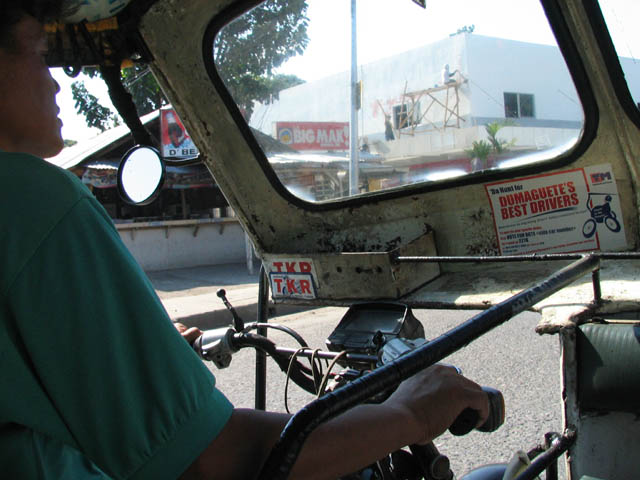
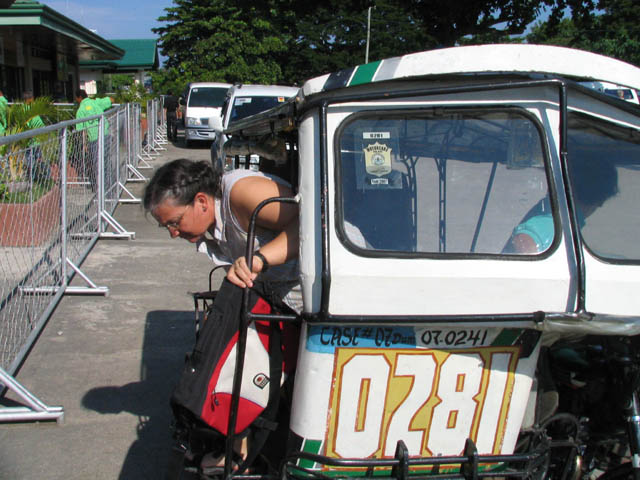
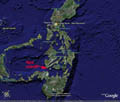 Getting there |
 Scenes |
 Diving |
 Kids & School |
 Village |
 Coconut Wine |
 Lighthouse |
 Sunsets |